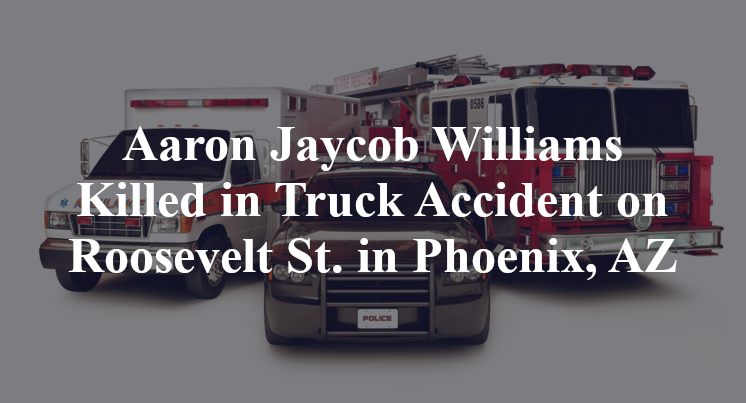Aaron Jaycob Williams Killed in Truck Accident on Roosevelt St. in Phoenix, AZ
Phoenix, AZ — April 5, 2025, Aaron Jaycob Williams was killed following a truck accident shortly before 3:15 a.m. along Roosevelt Street.
According to authorities, 24-year-old Aaron Williams was traveling in a westbound vehicle on Roosevelt Street in the vicinity of the the 43rd Avenue intersection when the accident took place.

Officials indicate that, for as yet unknown reasons, the motor vehicle attempted to pass another vehicle at an apparently unsafe time. It allegedly entered the eastbound lanes of the roadway where it was consequently involved in a head-on collision with an oncoming 18-wheeler.
Williams reportedly suffered fatal injuries due to the wreck. No other injuries have been reported. Additional details pertaining to this incident are not available at this point in time. The investigation is currently ongoing.
Commentary
When a vehicle crosses into oncoming lanes and collides head-on with an 18-wheeler, many people are quick to assume the case is closed—that it was simply a matter of one driver making a bad decision. But from where I sit, any crash that ends in a fatality deserves far more scrutiny than a one-sentence explanation.
If reports are accurate that the vehicle attempted to pass another car at an unsafe time, then it’s fair to ask why that decision was made. Was the driver unfamiliar with the road? Were visibility conditions poor? Was there a misjudgment of the speed or distance of oncoming traffic? Head-on collisions involving commercial trucks are rarely survivable, and when they occur, it’s critical to understand whether the driver had any reasonable way to avoid the crash once the vehicle entered his path.
That brings us to the role of the 18-wheeler. Even if the truck had the right of way, that doesn’t end the inquiry. Was the driver alert and operating the vehicle safely? Was the truck traveling at a reasonable speed for the area? Did the driver have a clear view of the road, or was visibility reduced due to lighting, obstacles, or the layout of the intersection? These are questions that need answers, and the evidence to answer them isn’t found in guesswork—it’s found in dashcam footage, black box data, and thorough scene analysis.
If the truck was operating under a commercial carrier, the investigation should also examine whether the company provided proper training for driving in mixed urban traffic during overnight hours. Were delivery deadlines pushing the driver to maintain high speeds through city streets? Was the truck maintained in a way that ensured full control and visibility at all times? These factors may not have caused the crash directly, but they can influence how severe it becomes—and whether there was any opportunity to avoid it.
From my perspective, a head-on collision like this doesn’t begin and end with one vehicle’s movement across the center line. It begins with understanding the full chain of events—what each driver saw, how they reacted, and whether either one had the training, equipment, or support to avoid what happened. That’s the only way to hold the right parties accountable and ensure that those affected by the wreck receive the clarity and closure they deserve.

“These are essential reads for anyone dealing with the aftermath of a truck wreck”– Attorney Cory Carlson